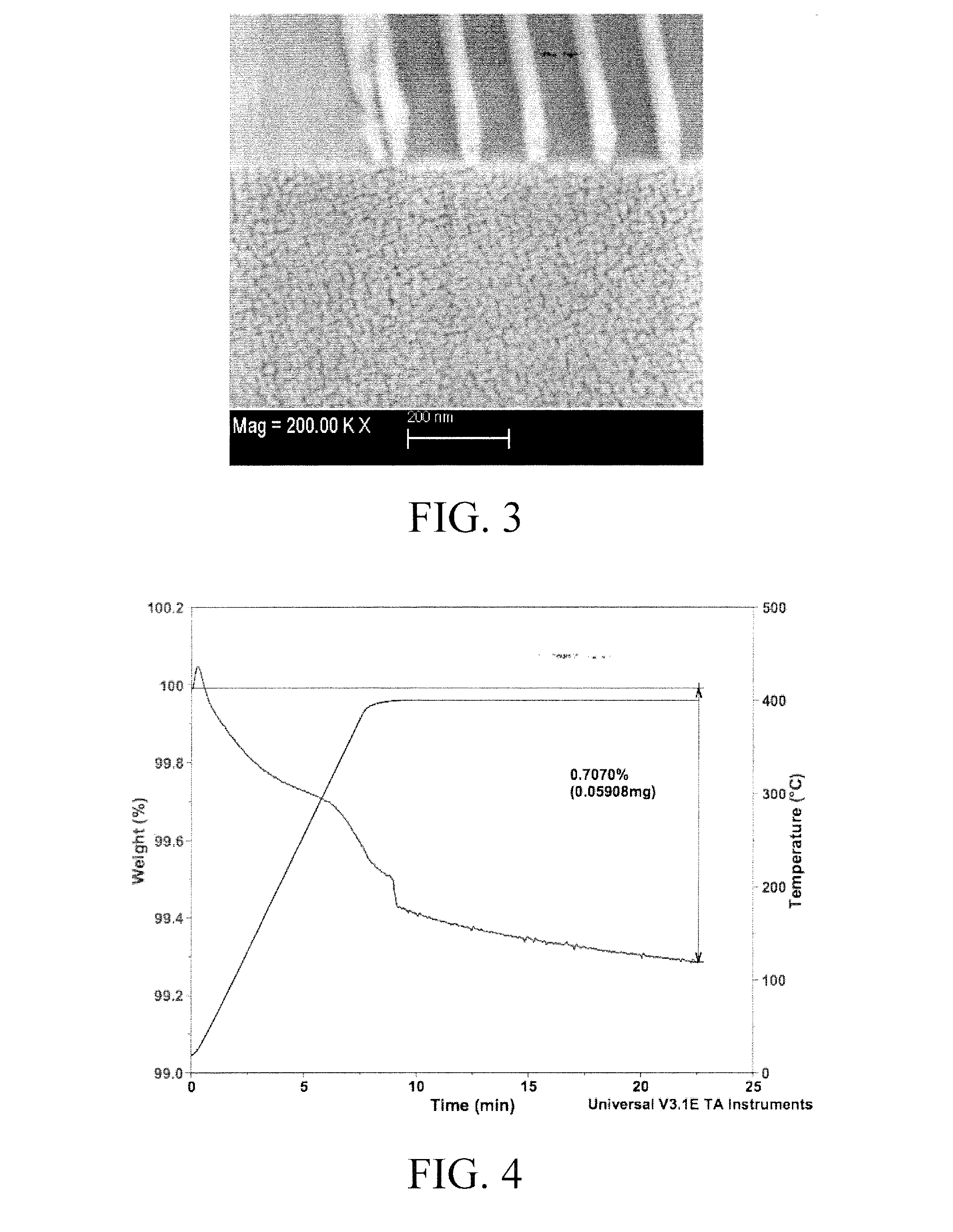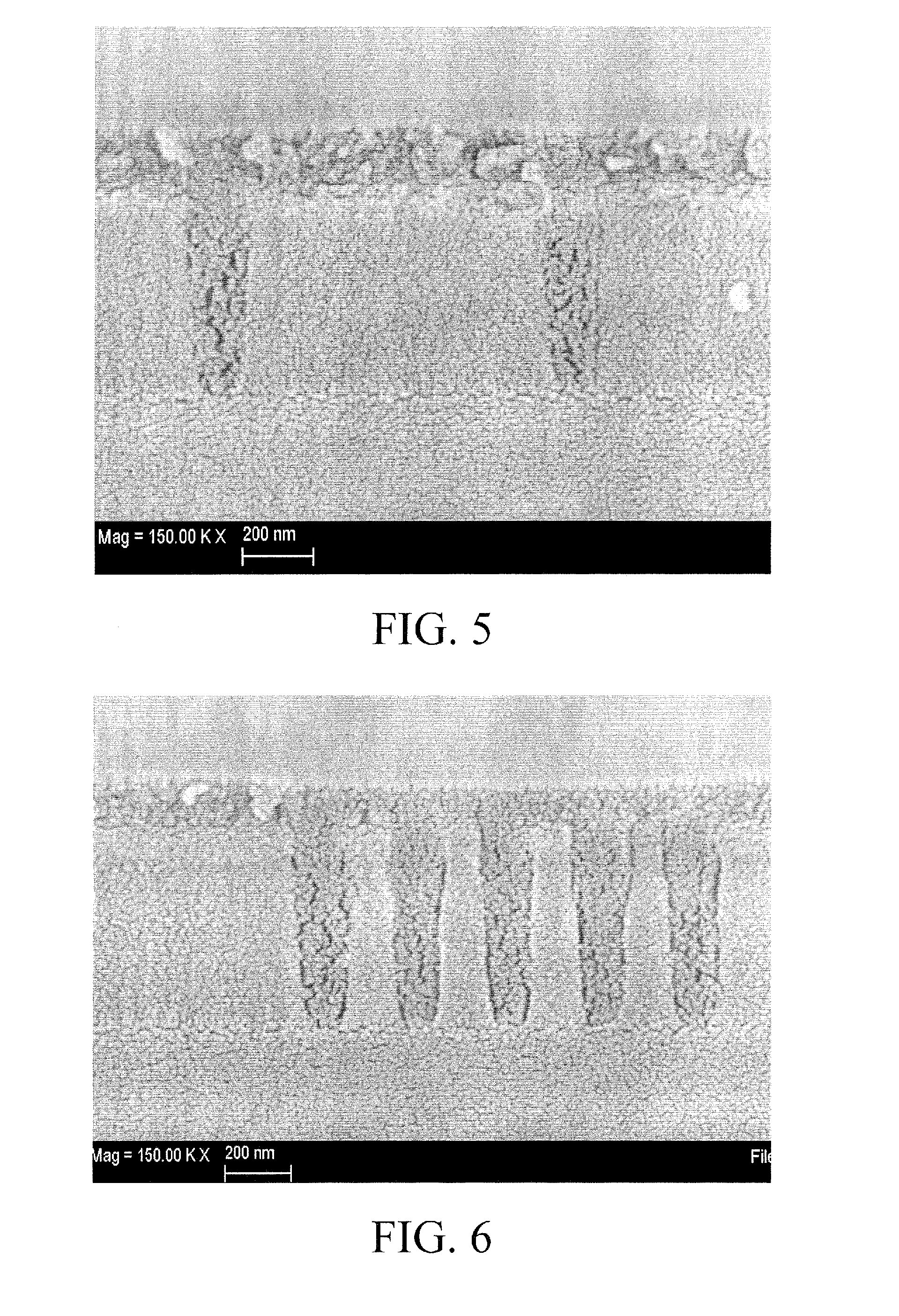Spin-on carbon compositions for lithographic processing
a technology of carbon composition and lithographic processing, which is applied in the direction of water setting substance layered product, synthetic resin layered product, printing, etc., can solve the problems of low throughput, high cost of cvd process, and insufficient thickness of single layer photoresist to complete pattern transfer to a substra
- Summary
- Abstract
- Description
- Claims
- Application Information
AI Technical Summary
Benefits of technology
Problems solved by technology
Method used
Image
Examples
example 1
Synthesis of Polymer A
[0053]In this Example, 16.99 grams (0.0643 mole) of 5-(2,5′-dioxotetrahydrol)-3-methyl-3-cyclohexene-1,2-dicarboxylic anhydride (CHRISKEV, Inc., Lenexa, Kans.), 14.00 grams (0.0402 mole) of 4,4′-(9-fluorenylidene)dianiline (CHRISKEV, Inc., Lenexa, Kans.), and 123.95 grams of propylene glycol monomethyl ether (“PGME,” Ultra Pure Solutions, Inc., Castroville, Calif.) were added to a two-necked round flask. The contents of the flask were stirred under nitrogen and, while stirring was maintained, heated at 60° C. for 24 hours to complete the reaction. The mixture was allowed to cool to room temperature and was bottled. Solids content was 20% by weight. The reaction scheme of this Example is shown below.
example 2
SOC Formulation A-1
[0054]An SOC formulation was prepared by mixing 5.01 grams of Polymer A from Example 1 with 0.114 gram of a 50% by weight solution of MY-720 (Huntsman Advanced Materials, Woodlands, Tex.) in PGME, 22.04 grams of PGME, and 2.92 grams of cyclohexanone to make a solution having a solids content of 3.5% by weight. The solution was mixed well for 4 hours and was filtered through a PTFE filter having a pore size of 0.1 μm. The formulation was spin-coated onto a 4-inch silicon wafer at 1,500 rpm for 60 seconds and then was baked on a hot plate at 225° C. for 60 seconds. The resulting cured film was measured by ellipsometry to be 1317 Å thick and could not be removed by PGME or propylene glycol methyl ether acetate (“PGMEA”).
example 3
SOC Formulation A-2
[0055]An SOC formulation was prepared by mixing 5.01 grams of Polymer A from Example 1 with 0.206 gram of a 50% by weight solution of MY-720 in PGME, 23.25 grams of PGME, and 3.07 grams of cyclohexanone to make a solution having a solids content of 3.5% by weight. The solution was mixed well for 4 hours and then was filtered through a PTFE filter having a pore size of 0.1 μm. The formulation was spin-coated onto a 4-inch silicon wafer at 1,500 rpm for 60 seconds, and then was baked on a hot plate at 205° C. for 60 seconds. The resulting cured film was measured by ellipsometry to be 1,378 Å thick and could not be removed by PGME or PGMEA.
PUM
| Property | Measurement | Unit |
|---|---|---|
| temperature | aaaaa | aaaaa |
| weight average molecular weight | aaaaa | aaaaa |
| temperature | aaaaa | aaaaa |
Abstract
Description
Claims
Application Information
 Login to View More
Login to View More - R&D
- Intellectual Property
- Life Sciences
- Materials
- Tech Scout
- Unparalleled Data Quality
- Higher Quality Content
- 60% Fewer Hallucinations
Browse by: Latest US Patents, China's latest patents, Technical Efficacy Thesaurus, Application Domain, Technology Topic, Popular Technical Reports.
© 2025 PatSnap. All rights reserved.Legal|Privacy policy|Modern Slavery Act Transparency Statement|Sitemap|About US| Contact US: help@patsnap.com



